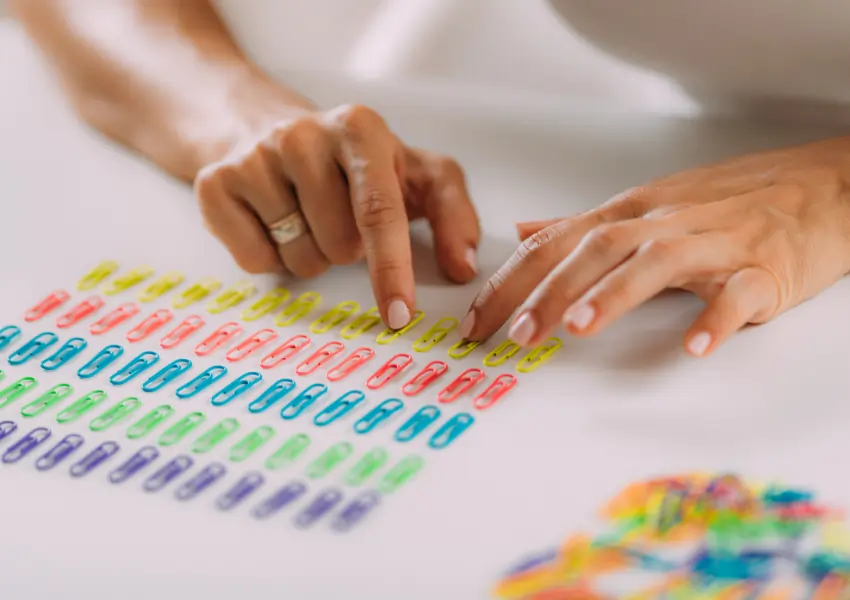Understanding the Reality of Obsessive-Compulsive Disorder (OCD)

Pop culture and media often present the OCD we know as somewhat of a compliment. Repetitive exposure has reduced it to a quirky trait, a harmless habit, or an insult that carries little weight—like the meticulous friend who insists on perfect organisation or the comic relief character who can’t stand a pen out of place. But the reality of OCD runs much deeper than just Monica Geller from F.R.I.E.N.D.S.
OCD, as many forget, is a disorder. It is a psychiatric condition that significantly interferes with daily activities and causes distress to those affected by it.
Understanding OCD
Obsessive-compulsive disorder, as the name hints, has two major aspects people suffer from. They experience either both or one of these.
Obsessions are unwanted recurrent thoughts, urges, or images that invade a person’s mind, forcing an inexplicable feeling that they must do something to ease the anxiety the thoughts trigger.
Compulsions are the said “something”—routines, repetitive actions, or phrases followed in an attempt to cope or relieve that anxiety.
Those with OCD might know that their actions don’t make logical sense, yet the urge to perform them feels unavoidable. Fear of falling into a spiral of anxiety that can consume their being for days drives this compulsion.
Signs of OCD
Because the symptoms of OCD can resemble everyday habits or tendencies that most people exhibit occasionally, many individuals fail to recognise their intrusive thoughts or rituals as part of a disorder. Misleading portrayals in the media further add to this confusion, making it even harder to distinguish OCD from ordinary behaviour.
The fifth edition of the Diagnostic and Statistical Manual for Mental Disorders (DSM-V) specifies criteria for an OCD diagnosis.
- Presence of Obsessions, Compulsions, or Both: A person must have the presence of obsessions, compulsions, or both.
- Time-Consuming and Disruptive: The obsessions and/or compulsions must be time-consuming, often producing distress in social and work life
(e.g., taking two hours to fold or organise laundry every day following a specific pattern). - Not Caused by Other Factors: The obsessions and compulsions must not stem from the physiological effects of a substance or another medical condition.
- Not Better Explained by Another Disorder: Another disorder cannot better explain the apparent anxiety (e.g., obsession with looks or body, like in body dysmorphic disorder).
Types of OCD
OCD shows up in different ways for different people. People experience either compulsion or obsession or both, often using compulsion as a coping mechanism for the obsession. The four main categories of OCD are:
Contamination
People are relatively familiar with this type of OCD, especially the compulsion part, which often manifests as washing hands, avoiding sitting where someone else has, cleaning excessively, and not being able to use public restrooms or transport.
The obsession relates to germs, bodily fluids, diseases, or the fear of being ‘impure’ or ‘unclean.’ People fear coming into contact with these things and act out compulsions to cope.
Checking OCD
This type of OCD involves constantly checking. Compulsions include checking doors, locks, windows, appliances, and switches. These compulsions stem from obsessions about someone breaking or entering, fire hazards, or similar dangers.
While rechecking serves as a necessary precaution for everyone, people suffering from this type of OCD experience the opposite effect with every check. Instead of feeling reassured, they tend to get caught in a loop of checking everything again. The more they check, the less confidence they gain.
Taboo or Forbidden Thoughts
This type of OCD involves sudden, unwanted images or ideas that feel deeply unsettling or “forbidden” flashing through one’s mind, without any emotional trigger. The thoughts are often about violence, sex, morality, or religion. It must be noted, though, that these are not desires but fears. People who suffer from this type of OCD fear they will harm someone, hurt themselves, or might become (or are) sexual predators. The obsessions also range to debates with oneself about identity, religion, and sometimes even existence.
Compulsions often include avoiding places with children, being cautious with sharp objects, and not driving to avoid accidents, among others.
Order and Symmetry
This type of OCD is a favourite of pop culture and media, despite their failure to represent it correctly. People who suffer from this type of OCD have a general and intense feeling that something isn’t right when things aren’t arranged in a specific order, symmetry, or perfect place. Obsessions include feelings of “incompleteness,” “wrongness,” “out-of-placeness,” or “unbalancedness.”
Compulsions for this type of OCD manifest in arranging and rearranging furniture, repeating words until they feel right, or even focusing intensely on body proportions.
Conclusion
We must acknowledge that OCD is more than just an eccentricity; it’s a struggle that requires compassion and understanding. Everyone has their own idiosyncrasies, but the difference with OCD is that these patterns go far beyond quirks, turning into cycles that disrupt daily life.
The difference lies between someone who simply enjoys stepping on cracks and someone who feels compelled to do it to prevent something bad from happening. That is where OCD stands. With the right awareness and treatment, people with OCD can live not just managed but truly meaningful lives. Recognising what OCD really is helps replace stigma with compassion and moves us beyond stereotypes toward genuine empathy.
You might also like:

